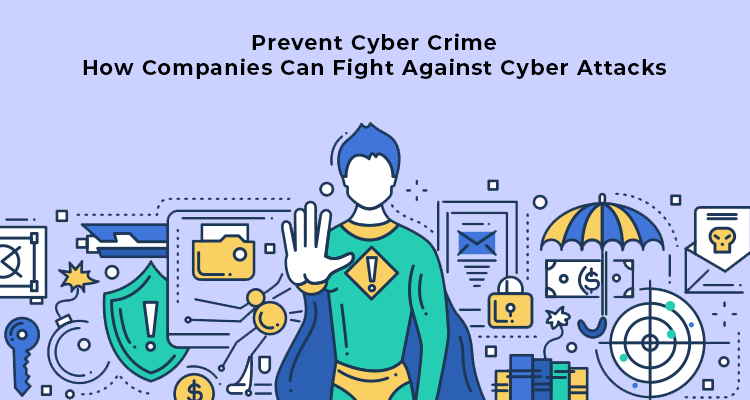In the present world where most businesses are digitized, cyber crimes are inevitable. Owing to this, it is imperative for firms to know how to prevent cyber crime & secure themselves from potential attacks. They also must know how to respond in case of a security breach. Here we enlist the necessary information and measures that shall be functional for one to tackle & restrain cyber crimes.
Types of Cyber Attacks

Malware
Usually grants illegitimate access to scammers by the installation of a malicious software. Scammers are exposed to the personal files, emails, logins, and identities of targeted users. Malware is developed by scammers, companies, and government to gain access to any form of information that can be of interest to them. It has its fraudulent profit-making and political motivations. For instance, Stuxnet was one such malware suspected to be developed by America/Israel cyber weapon, that affected Iran’s nuclear program.

Ransomware
Ransomware demands ransom payment (cryptocurrency) from the user to release their files. It perpetuates through phishing emails that undertakes control over a system. However its best-known example the Wanna cry worm spread through systems without any user engagement in perpetuating it. The attack targeted over 300000 systems in over 150 countries running without the latest patch of Microsoft. The monetary loss amounted hundreds of millions of dollars. Another ransomware NotPetya occured in 2017, which is considered the deadliest cyber attack so far

Whaling
Whaling is a specific form of phishing attack that particularly targets the leading representatives of a firm like CEO or CFO to retrieve confidential information of their company. The underlying motive of such an attack is to gain high-value transfers from the company. This is also accomplished through email spoofing, social spoofing, and content spoofing attempts.
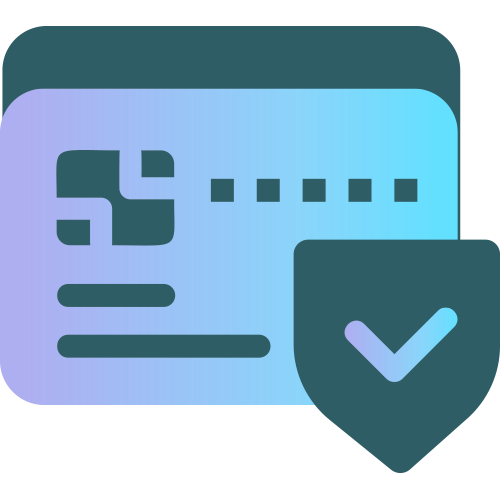
Phishing
This is the form of attack wherein the scammers disguise as a legitimate source and engage in a conversation with the user through emails, instant messaging etc. It is done under the false pretext to retrieve the personal and financial details in order to deceive the user. 76℅ enterprises suffered from phishing attacks in 2017 alone. Around 100 million dollars were compromised through the phishing email that targeted Google and Facebook users in another attack in the same year.
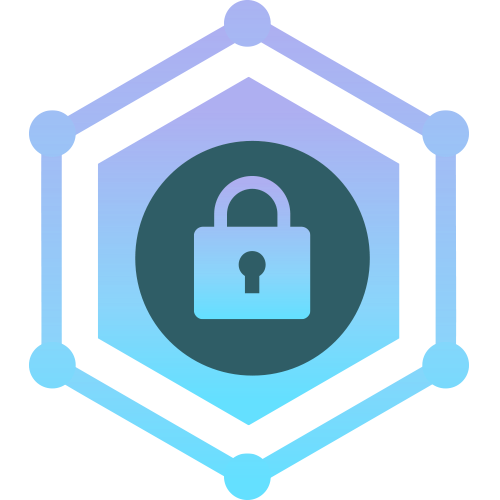
Botnets
Botnets entail a network of compromised systems that are ‘bots’. The systems are penetrated through malware. They execute a Distributed Denial of Service attack (DDoS). For instance, in 2016 alone Mirai Malware was installed in a series of IoT devices that led to the DDoS attack on the DNS of Dyn provider. It affected the accessibility to recognized websites like Reddit, Netflix, Twitter, Airbnb, GitHub, and others.
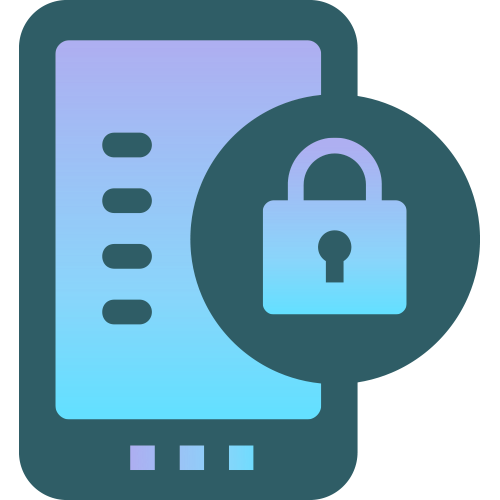
Hacking
It is a security breach wherein the hacker gains illegitimate access to a system through exploits or bugs for malicious purposes. For instance, in 2015 US servers were hacked and the leaked information was passed on to the terrorist group ISIL. Likewise in 2017 “The Dark Overlord” hacker group leaked episodes of the Netflix show ‘Orange is the New Black’.
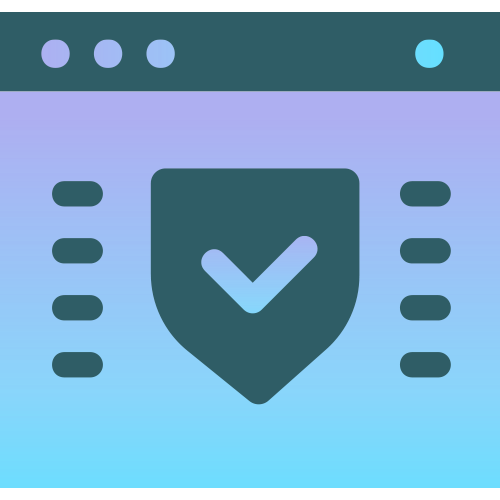
Pharming
Pharming transports a user to a malicious version of an otherwise legitimate website and then exploit the user for personal information. The attack is triggered when a scammer manages to penetrate a malicious code in the user’s system.
Security Measures to Prevent Cyber Crime
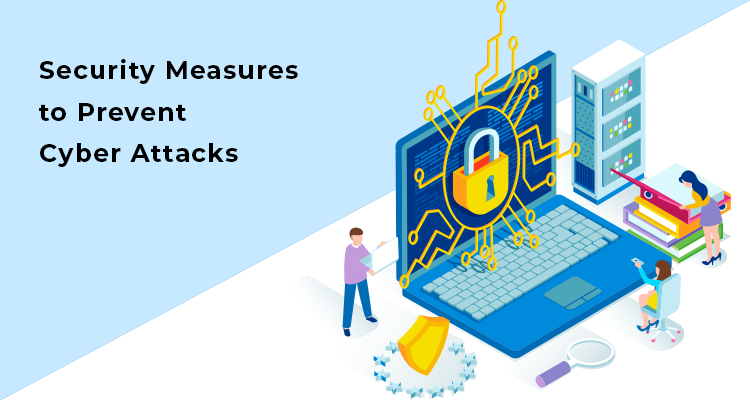
Security measures that can be undertaken by companies to prevent cyber crime:
Implement Digital Trust
The accessibility and knowledge of a company’s vulnerabilities are most approachable for an insider of their own. Due to this kind of unreliability, most companies are now implementing Digital Trust which is a form of identification that can be established through the digital fingerprint of an employee. This would trace the activity of a user, the system they use and the work they engage with, through a behavioral profile.
Focus on Cloud-Based Security
Cloud-based security is far more flexible and scalable due to their open APIs. Since they are platform delivered, technologies can be integrated or switched onto the platform according to the necessity of the security team.
Security by Design
The approach to developing technologies for year focused on the building of the technology first and the incorporation of the security measure at the end. The changed approach focuses on incorporating security measures along the design structure in the building of technologies. This change is channelized by a security conscious approach such that security measure is leveled at every step of the development and change.
The approach to developing technologies for year focused on the building of the technology first and the incorporation of the security measure at the end. The changed approach focuses on incorporating security measures along the design structure in the building of technologies.
Improvising Authentication
The authentication measure in use for security purposes is outdated and rather tentative. Bio-metric identification, 2-factor authentication is revised forms of security checks that replace passwords but they are also not functional everywhere. Thus authentication measures need improvisation and changes.
Conduct Cyber Security Audit
A cybersecurity audit would allow the company to detect its vulnerabilities and areas where data is at the threat to potential attack.
Manage Information Access
Protecting data access internally can prevent the threat from internal attacks and breaches. The accessibility to data should be classified according to the role of an employee. This will also prevent possible phishing attack or malware infection that can be caused by the actions an employee has taken. Firms must train their employees to identify and report breaches that may be internally incurred. Also, intentional breaches must be penalized.
Intelligence Driven Security
Machine learning shall become effective in detecting and changing minimal risks on their own. However, it is also true that hackers shall also deploy machine learning in their attacks. So the idea shall be to respond predictively instead of reacting to an attack. Companies would need automated threat seekers that could detect any potential attack by scanning a company’s work environment in the technical sense. This rise of robo hunters could lead to a predictive security posture.
Establishing a Security Culture
Firms need to be engaged with one another in their security management and share methods and guidance to create a security-oriented approach in the industries. It is also necessary that firms use updated software, systems and be aware of the problems that are responsible for pitfalls and monetary losses.
Managing Devices
Enterprises are using mobile applications for a user base. The IoT has connected devices. Some of those devices lack efficient security. The network thus established, results in endpoints that can be easily exploited. Thus companies need to manage these devices that can cause threat
Creating a Cyber Security Policy
A cybersecurity policy shall delineate the assets of a particular firm, the regulation of access to those assets and the effective measures for the protection of those assets. Such an approach is legally informed and security oriented, which is much needed today to prevent any cyber crime.
Recognizing Cyber Attacks
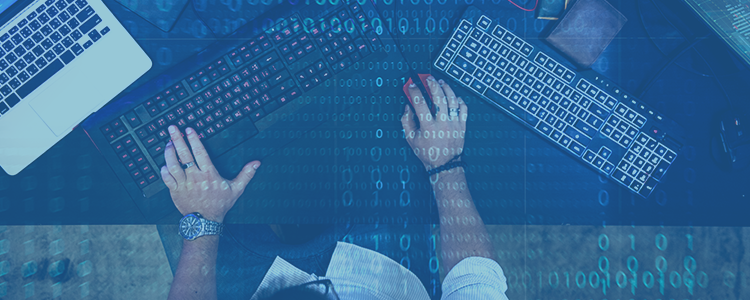
The detection of a cyber attack may be determined long after the breach first occurred. Nonetheless, it is essential to retain factors that may hint towards a possible breach. The following may indicate towards a breach:
- accounts and network cannot be accessed
- passwords are ineffective
- Loss or alteration of data
- The hard drive runs out of memory
- The systems keep crashing
- Complaints of customers pertinent to spam from the business account may be received.
- Pop up ads are constant.
- Signs of a security breach to have been reported an brought to notice by security staff, user, network and system administrators.
- A report on the log data by SIEM, SEM etc. could notify with alerts.
- Anti-malware programs.
- Unreasonable changes on monitoring the baseline traffic.
- Changes in the configuration of services and applications.
Responding to a Cyber Attack

Most firms are under the impressions that they are immune to cyber attacks & they don’t need a policy & team to prevent cyber crime or tackle any cyber attack, because they aren’t too significant to be targeted. Such hoax is the reason that firms don’t invest in cyber security. Planning response to a possible cyber attack can save a firm from jeopardizing itself. Being aware of the procedure one may undertake in case an attack occurs is as integral as being cautious and maintaining prevention.
First Response Team
One must assemble a team of cyber experts with the necessary knowledge and skills to handle the situation. It is expected of firms to be prepared with a trained staff of Security Incident Response team (CSIRT) with specialists from both technical and nontechnical field. This would include individuals from human resource, legal representatives, public representatives, data protection experts etc.
Detecting a Breach
The appointed team’s first motive must be to detect the technical cause of the breach. Following factors can suggest the occurrence:
- Signs of a security breach to have been reported and brought to notice by security staff, user, network and system administrators.
- A report on the log data by SIEM, SEM etc. could notify with alerts.
- Anti-malware programs
The team must be adept to locate where the breach began in the first place. Such determinism assists in retrieving data, information, recognizing the affected area and ultimately in countering the attack.
Addressing the Breach
Once the breach has been located and determined the next move should be to contain it.
The network access for the compromised systems could be shut down.
If the breach has been caused by insider then the account and access of that individual could be blocked. There may be a requirement to switch passwords and accesses. Legal documentation and a detailed investigation would be involved in such a case.
However, even in the course of detection and containment, the business must run its course uninterrupted and this shall be ensured.
Restoration of System
Once the breach has been addressed the firm must ensure the restoration and rectification of the networks and systems. Any possibility of the spread of the damage must be curbed. For the continuity of business uninfected systems shall be isolated from the rest.
Notification
The repercussions of a cyber crime may include loss of confidential information and data that may have been stolen. It would be important that a firm notifies the occurrence and the damage that occurred by the attack for transparency and accountability. This becomes especially important for firms that have an established customer base, reputation and clients. The legal responsibility calls for a report of such an occurrence.
Damage Assessment & Review
Finally, the damage must be assessed and it is essential that the firms analyze the loopholes that caused the attack, their effectiveness in tackling it and attempt at rectifying mistakes to prevent any future cyber crime. For instance, the cyber attack may have resulted in the shut down of a business component. It may further be of use to understand if the attack was external or internal, what measures could be undertaken etc. It may also involve security policy changes for reassuring customers and clients.
Read Another Article of Our on Cybersecurity here :’Why it’s the right time to build a career in Cybersecurity‘

